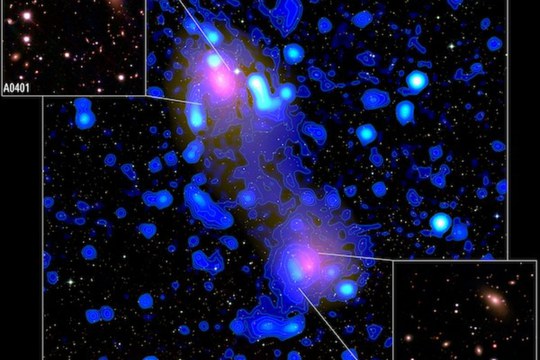In the Universe, matter is distributed along the so-called "cosmic web" consisting of filamentary structures, at the intersection of which huge concentrations of dark matter, gas and galaxies form. These structures are known as galaxy clusters.
Clusters of galaxies are the largest gravitationally-bound structures in the Universe.
Radio observations show that the central regions of some galaxy clusters host a “halo” of radio emission. This emission is due to the synchrotron mechanism, and probes the existence of magnetic fields, that has likely been amplified by the structure formation processes.
Up to now, a magnetic field in the filaments connecting clusters had never been observed. Thanks to low frequency radio observations with the LOFAR telescope, it has been possible to detect magnetic fields of intensities as low as 100 nG, in the filamentary region that connects the clusters Abell 399 and Abell 401. The discovery was possible thanks to LOFAR deep radio observations, that are very sensitive to large-scale emission, and thanks to a comparison with magnetohydrodynamic cosmological simulations. These simulations allowed the authors to constrain the intensity of the magnetic field and the origin of the emitting electrons. This discovery has important implications to understand the origin of magnetic fields in the Universe.

